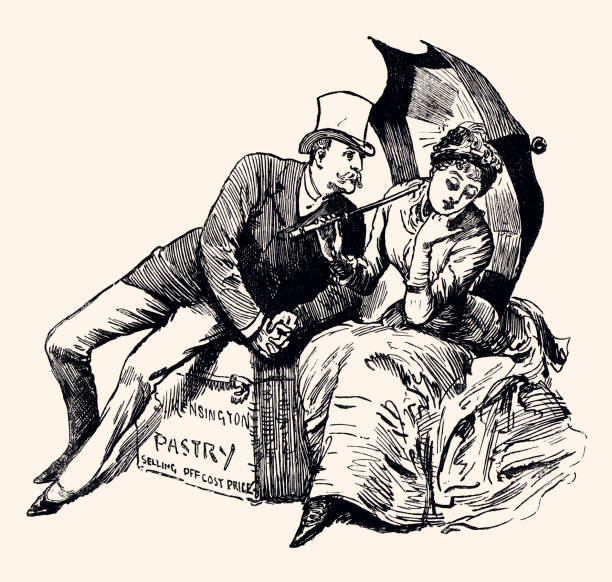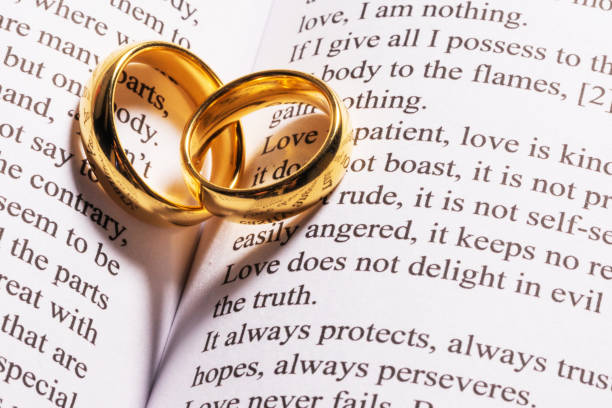Through the Ages: A Journey of Love's Ever-Shifting Landscape
Love, a universal human experience, has captivated hearts and minds for millennia. But how we perceive, express, and value love has undergone dramatic transformations throughout history. This article embarks on a captivating journey, exploring how different historical eras and cultures have shaped our understanding of this intricate emotion.
Ancient Civilizations: Love Rooted in Duty and Pragmatism
In many ancient societies, love wasn't the primary driver of marital unions. Practical considerations like social status, family alliances, and economic security often took precedence.
- Ancient Egypt: Egyptians valued love, but it often existed alongside duty. Love poems documented in hieroglyphs depict a sense of tenderness and physical affection. However, marriages were frequently arranged for political or economic gain.
- Ancient Greece: The Greeks differentiated between several types of love. "Eros" represented passionate and often fleeting desire, while "Philia" embodied friendship and deep emotional connection. Romantic love, as we know it, wasn't a central focus in marriage.
- Ancient Rome: Similar to the Greeks, Romans distinguished between passionate love ("amor") and marital love ("affectio"). Marriages were primarily seen as partnerships for procreation and social advancement.
The Rise of Courtly Love: Chivalry and Idealization in the Middle Ages
The Middle Ages witnessed a shift in the perception of love. Courtly love, a literary and social phenomenon, emerged in Europe around the 11th century.
- Characteristics of Courtly Love: This concept emphasized unattainable love, often directed towards a married noblewoman. The focus was on chivalry, devotion, and the expression of love through poetry and music. Consummation of love was rarely expected.
- Impact on Society: Courtly love ideals permeated literature and social customs. It didn't necessarily translate into real-life marriages, but it introduced the notion of romantic love as a powerful emotion worthy of pursuit.

The Renaissance: A Celebration of Individualism and Sensuality
The Renaissance, with its emphasis on humanism and individuality, brought a renewed appreciation for human emotions, including love.
- Focus on Beauty and Sensuality: Renaissance art and literature celebrated physical beauty and the sensuality of love. Artists like Titian and Botticelli depicted love in all its earthly glory.
- Platonic Love and Neoplatonism: Philosophers like Marsilio Ficino explored the concept of Platonic love, emphasizing the spiritual and intellectual aspects of love. This concept often informed courtly love practices.
The Enlightenment: Reason and Logic Take Center Stage
The Enlightenment era (17th-18th centuries) brought a shift towards reason and logic. Love was often viewed with suspicion, seen as an irrational force that could cloud judgment.
- Marriage as a Rational Choice: Philosophers like Thomas Hobbes advocated for marriage as a social contract based on reason and mutual benefit rather than passionate love.
- The Rise of the Novel: The novel emerged as a new literary form, exploring the complexities of love and relationships in a more realistic manner. Jane Austen's novels, for example, depicted the importance of social status and economic security in marital choices.
The Romantic Movement: A Celebration of Passion and Individuality
The Romantic movement, a reaction to the perceived coldness of the Enlightenment, brought back a passionate and emotional conception of love.
- Love as a Powerful Force: Romantic poets like William Wordsworth and John Keats exalted the transformative power of love and its connection to nature. Individual expression of love and passionate devotion became a central theme.
- The Cult of Sensibility: Emphasis was placed on intense emotions and the expression of feelings. Tragic love stories, like Romeo and Juliet, became popular, highlighting the destructive power of love as well.
The Victorian Era: Duality and Restraint
The Victorian era (19th century) presented a more complex picture of love. Strict social codes dictated proper behavior, often leading to a duality between public propriety and private desires.
- Domesticity and the Cult of True Womanhood: The ideal woman was seen as nurturing, domestic, and devoted to her family. Love was expected to blossom within marriage, with a focus on duty and companionship.
- Hidden Desires and Expressions of Love: Beneath the surface of social propriety, passionate love and desires could simmer. Literature like Jane Eyre explored the tension between societal expectations and the yearning for passionate love.

The 20th and 21st Centuries: Love in a Modern World
The 20th and 21st centuries have witnessed a dramatic shift in how we view and experience love.
- Increased Individualism and Personal Choice (continued): Love is no longer solely tied to societal expectations or economic considerations. People prioritize emotional connection, shared values, and personal fulfillment in romantic relationships.
- The Sexual Revolution and Changing Gender Roles: The sexual revolution in the mid-20th century challenged traditional notions of sexuality and gender roles. Love became more openly expressed, and sexual intimacy became a more central aspect of romantic relationships.
- The Rise of Diversity and Acceptance: Greater societal acceptance of LGBTQ+ relationships and alternative family structures is reshaping how we understand and celebrate love. Love is no longer confined to a heteronormative ideal.
- The Impact of Technology: Technology plays a significant role in modern love. Dating apps and social media have transformed how we meet potential partners and maintain relationships. However, this also presents challenges related to online deception and the pressure to curate a perfect online persona.

The Enduring Power of Love: A Universal Experience
Despite the historical transformations, love remains a fundamental human experience that transcends time and culture. It continues to inspire art, literature, and music, and motivates us to connect with others on a deeper level.
Here are some additional points to ponder:
- The Universality of Love vs. Cultural Variations: While love is a universal human emotion, its expression and cultural understanding vary greatly. Understanding these variations fosters empathy and cross-cultural communication.
- The Challenge of Defining Love: Love is a multifaceted concept with various components, making it a challenge to define universally. However, exploring historical and cultural perspectives can enrich our understanding of its complexities.
- The Future of Love: As societies continue to evolve, it will be interesting to see how technological advancements and changing social norms further shape our views of love and relationships.
The exploration of historical views on love offers a fascinating glimpse into the evolution of human emotions and societal values. By understanding how love has been perceived throughout history, we gain a deeper appreciation for its complexities and its enduring power in shaping our lives.






















![[LIVE] Engage2Earn: Save our PBS from Trump](https://cdn.bulbapp.io/frontend/images/c23a1a05-c831-4c66-a1d1-96b700ef0450/1)



























![[ℕ𝕖𝕧𝕖𝕣] 𝕊𝕖𝕝𝕝 𝕐𝕠𝕦𝕣 𝔹𝕚𝕥𝕔𝕠𝕚𝕟 - And Now What.... Pray To The God Of Hopium?](https://cdn.bulbapp.io/frontend/images/79e7827b-c644-4853-b048-a9601a8a8da7/1)


